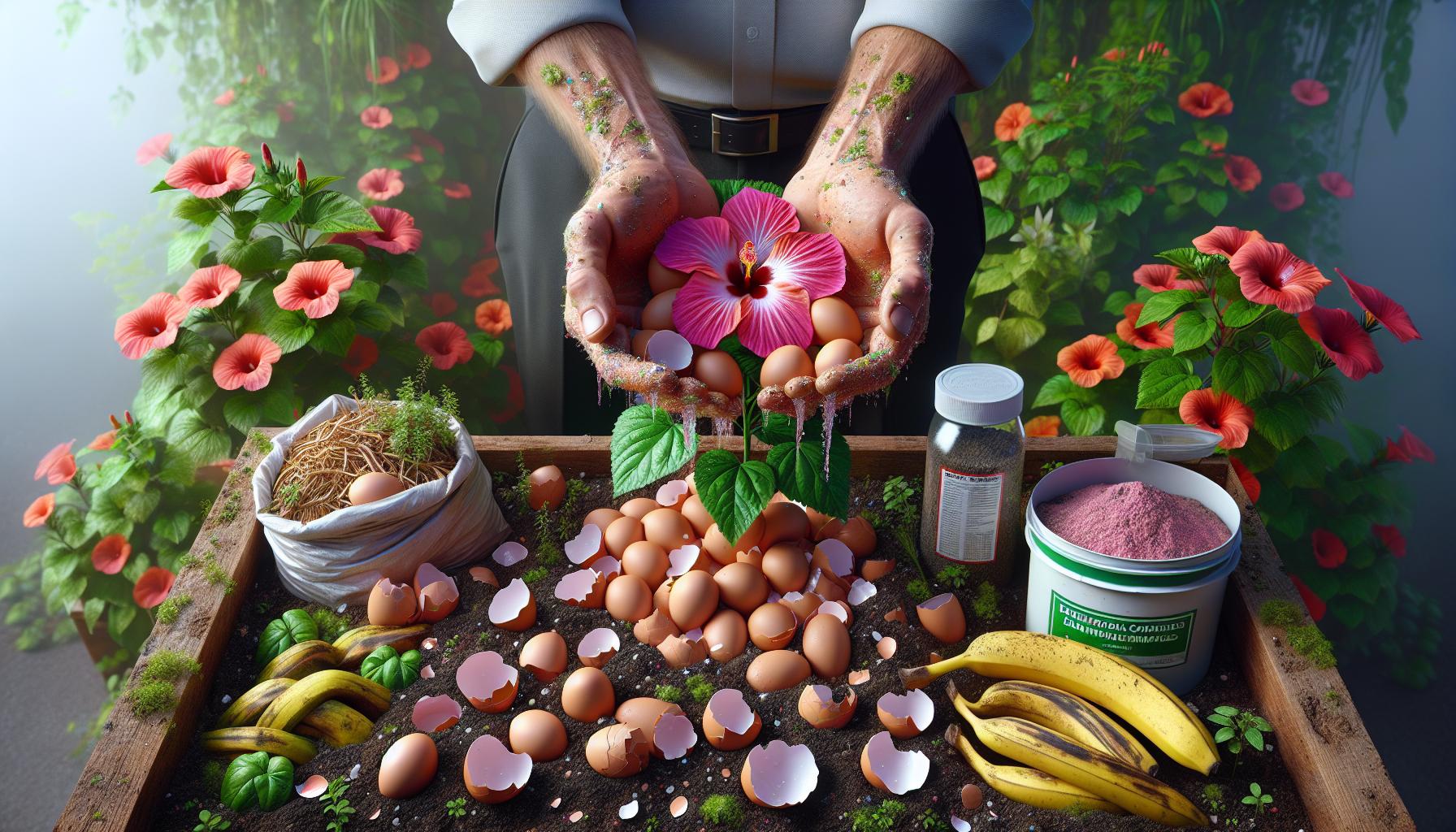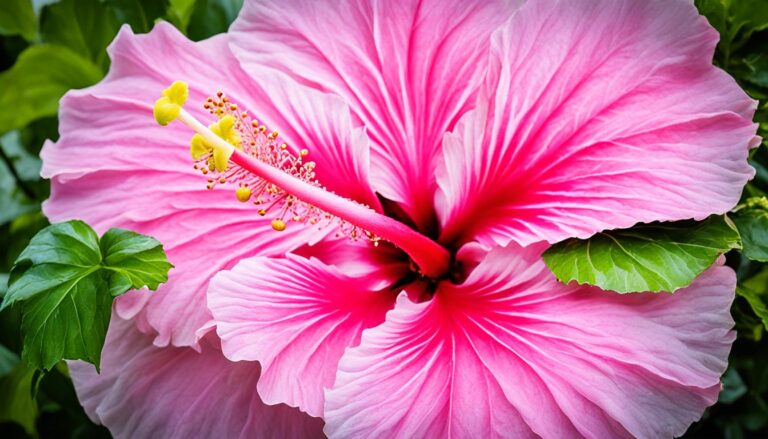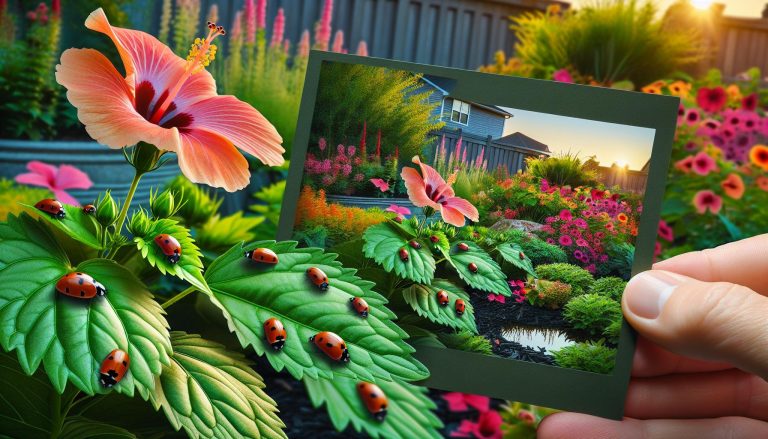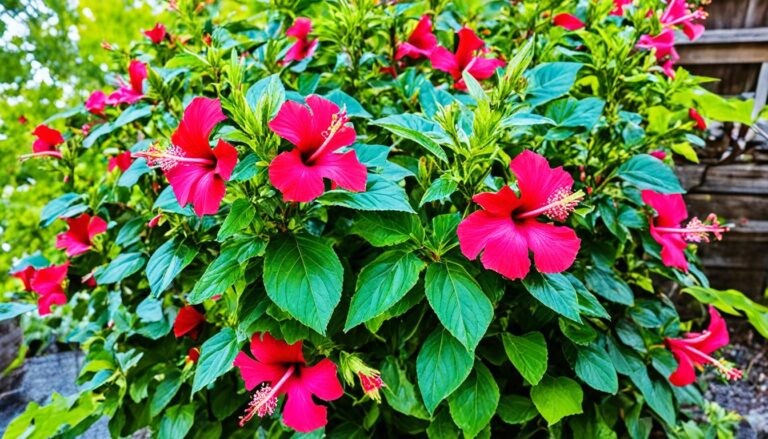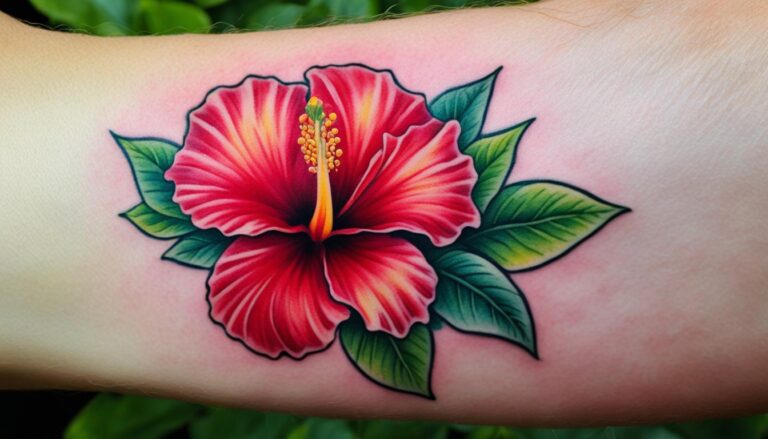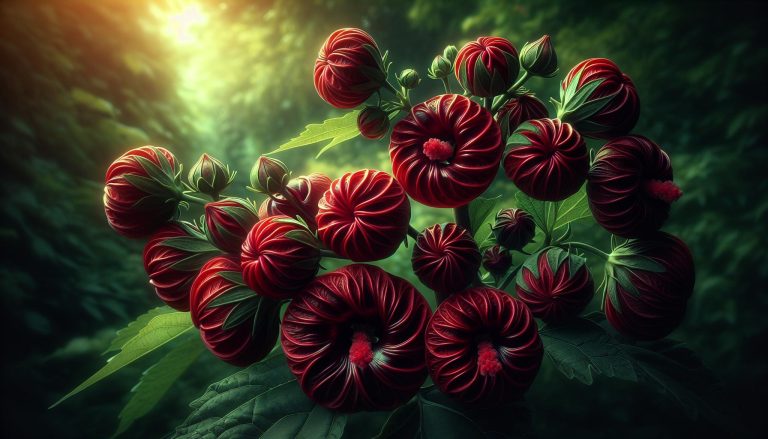Are Eggshells Good for Hibiscus? 5 Natural Fertilizer Alternatives
As a passionate gardener, I’ve always been on the lookout for natural ways to boost my plants’ health. Recently, I’ve been wondering about using eggshells for my beloved hibiscus. Could these kitchen scraps really be the secret to vibrant blooms and lush foliage?
Eggshells are rich in calcium, an essential nutrient for plant growth. But are they specifically beneficial for hibiscus? And if so, how can we use them effectively? In this article, I’ll explore the potential benefits of eggshells for hibiscus plants and share some practical tips on incorporating them into your gardening routine. Let’s crack open this topic and discover if eggshells are truly a game-changer for your hibiscus.
Understanding Hibiscus Plants and Their Nutritional Needs
Hibiscus plants are stunning tropical beauties that thrive with proper care and nutrition. These eye-catching flowering shrubs require specific nutrients to produce their vibrant, showy blooms and lush foliage.
Essential Nutrients for Hibiscus Growth
Hibiscus plants need a balanced diet of macronutrients and micronutrients:
- Nitrogen (N): Promotes leaf growth and overall plant health
- Phosphorus (P): Supports root development and flower production
- Potassium (K): Enhances disease resistance and improves bloom quality
- Calcium (Ca): Strengthens cell walls and aids in nutrient uptake
- Magnesium (Mg): Essential for chlorophyll production
- Iron (Fe): Crucial for photosynthesis and chlorophyll formation
Soil pH and Nutrient Availability
Hibiscus plants prefer slightly acidic soil with a pH range of 6.0 to 6.5. This optimal pH level ensures:
- Maximum nutrient availability
- Efficient nutrient absorption
- Healthy root development
I’ve found that maintaining the right soil pH is key to vibrant hibiscus blooms. A simple soil test can help you determine if adjustments are needed.
Signs of Nutrient Deficiencies in Hibiscus
Recognizing nutrient deficiencies early can prevent long-term damage:
| Nutrient | Deficiency Symptoms |
|---|---|
| Nitrogen | Yellowing of older leaves, stunted growth |
| Phosphorus | Purple-tinged leaves, reduced flowering |
| Potassium | Brown leaf edges, weak stems |
| Calcium | Distorted new growth, blossom end rot |
| Magnesium | Yellowing between leaf veins |
| Iron | Yellowing of new leaves, green veins |
Fertilization Strategies for Healthy Hibiscus
To keep hibiscus plants thriving:
- Use a balanced, water-soluble fertilizer (10-10-10 or 20-20-20)
- Apply fertilizer every 2-3 weeks during the growing season
- Reduce fertilization in fall and winter
- Consider slow-release fertilizers for consistent nutrient supply
Remember, over-fertilization can harm hibiscus plants. It’s better to under-fertilize slightly than to overdo it.
By understanding the nutritional needs of hibiscus plants, you’ll be well-equipped to provide the care they need to produce stunning blooms throughout the growing season.
The Composition of Eggshells

Eggshells are more than just waste; they’re a treasure trove of nutrients for your garden. Here’s what makes them so valuable:
- Calcium Carbonate: The primary component, making up 95% of eggshells
- Trace Minerals: Including magnesium, potassium, and phosphorus
Let’s break down these components:
Calcium Carbonate
Calcium carbonate is the star player in eggshells. It’s the same stuff that makes up limestone and chalk. When added to soil, it:
- Raises pH levels
- Improves soil structure
- Boosts calcium availability for plants
Trace Minerals
While present in smaller amounts, these minerals pack a punch:
| Mineral | Function in Plants |
|---|---|
| Magnesium | Essential for chlorophyll production |
| Potassium | Aids in water regulation and fruit quality |
| Phosphorus | Crucial for root development and flowering |
These trace minerals complement the calcium, creating a well-rounded soil amendment.
I’ve found that finely ground eggshells release their nutrients more quickly. Crushing them to a powder-like consistency helps your hibiscus absorb the goodness faster.
Remember, eggshells aren’t a complete fertilizer. They’re best used as a supplement to your regular feeding routine. In my garden, I’ve seen great results using them alongside a balanced, hibiscus-specific fertilizer.
Benefits of Eggshells for Hibiscus
Eggshells offer several advantages for hibiscus plants, providing essential nutrients and improving soil conditions. Here’s how eggshells can benefit your hibiscus:
Calcium Boost for Stronger Plants
Eggshells are rich in calcium carbonate, a crucial nutrient for hibiscus growth. This calcium:
- Strengthens cell walls, making plants more resilient
- Promotes healthy root development
- Enhances nutrient uptake from the soil
- Supports flower production and overall plant vigor
I’ve found that hibiscus plants treated with crushed eggshells often develop sturdier stems and lush foliage.
pH Balance Improvement
Eggshells help maintain optimal soil pH for hibiscus:
- Gradually raise soil pH, countering acidity
- Create an ideal environment for nutrient absorption
- Promote beneficial microbial activity in the soil
Tip: Test your soil pH regularly to ensure it stays within the 6.0-6.5 range that hibiscus prefer.
Pest Deterrent Properties
Crushed eggshells can act as a natural pest deterrent:
- Create a sharp barrier that deters soft-bodied pests like slugs and snails
- Rough texture discourages crawling insects from reaching the plant
- Reduce the need for chemical pesticides
To maximize effectiveness, sprinkle a layer of finely crushed eggshells around the base of your hibiscus plants.
How to Prepare Eggshells for Hibiscus Plants
Preparing eggshells for hibiscus plants is a simple process that can yield significant benefits for your garden. Here’s how to transform your kitchen waste into a valuable nutrient source for your hibiscus.
Grinding Eggshells into Powder
- Clean the eggshells thoroughly under running water to remove any egg residue.
- Dry the eggshells completely by spreading them on a paper towel or baking sheet.
- Microwave the shells for 1-2 minutes to sterilize them and make them brittle.
- Place the dried, sterilized eggshells in a coffee grinder or food processor.
- Pulse until you’ve created a fine powder, similar to the texture of flour.
- Store the eggshell powder in an airtight container until ready to use.
Apply the powder directly to the soil around your hibiscus plants, gently working it into the top layer. Use about 1 tablespoon per plant every month during the growing season.
- Crush cleaned, dried eggshells into small pieces.
- Place 8-10 crushed eggshells in a large mason jar or heat-resistant container.
- Pour 4 cups of boiling water over the eggshells.
- Let the mixture steep overnight or for at least 8 hours.
- Strain the liquid, discarding the eggshell pieces.
- Dilute the eggshell tea with an equal amount of water before use.
Water your hibiscus plants with this nutrient-rich tea once a week during the growing season. This method provides a quick calcium boost and helps improve nutrient uptake.
Applying Eggshells to Hibiscus Plants
Applying eggshells to hibiscus plants is a practical way to boost calcium levels and improve soil health. Here are two effective methods for incorporating eggshells into your hibiscus care routine.
Soil Amendment Method
To use eggshells as a soil amendment for hibiscus:
- Collect and clean eggshells thoroughly
- Dry the shells completely
- Crush them into a fine powder using a mortar and pestle or food processor
- Sprinkle 1-2 tablespoons of eggshell powder around the base of your hibiscus plant
- Gently work the powder into the top inch of soil
- Water the plant to help the nutrients soak in
Apply this amendment every 2-3 months during the growing season. This method slowly releases calcium and other minerals into the soil, promoting strong root development and overall plant health.
Foliar Spray Technique
The foliar spray technique allows hibiscus plants to absorb nutrients directly through their leaves:
- Steep 1 cup of crushed eggshells in 1 gallon of water for 24-48 hours
- Strain the liquid, discarding the eggshell remnants
- Pour the eggshell tea into a spray bottle
- Mist the hibiscus leaves thoroughly, focusing on the undersides
- Apply the spray early in the morning or late in the evening to prevent leaf burn
Use this foliar spray once a month during the growing season. It’s a quick-acting method that provides an immediate calcium boost to your hibiscus plants, enhancing flower production and leaf health.
Potential Drawbacks of Using Eggshells
While eggshells can be beneficial for hibiscus plants, there are a few potential drawbacks to consider:
pH Imbalance
Eggshells are alkaline and can raise soil pH. This might be problematic for hibiscus plants, which prefer slightly acidic soil (pH 6.0-6.5). I’ve found that overusing eggshells can lead to:
- Yellowing leaves
- Stunted growth
- Reduced flower production
To avoid this, I always test soil pH before and after applying eggshells. If the pH rises above 6.5, I cut back on eggshell applications.
Slow Nutrient Release
Eggshells release calcium slowly, which can be both a pro and a con:
| Timeframe | Calcium Release |
|---|---|
| 1 month | 5-10% |
| 3 months | 15-25% |
| 6 months | 30-40% |
This gradual release means it takes time for hibiscus plants to reap the full benefits. For quicker results, I sometimes opt for more immediate calcium sources.
Potential Pests and Odors
Raw eggshells can attract pests and create unpleasant odors in your garden. To mitigate these issues:
- Rinse eggshells thoroughly
- Dry them completely before use
- Grind them into a fine powder
By following these steps, you’ll reduce the risk of unwanted visitors and smells in your hibiscus bed.
Labor-Intensive Preparation
Preparing eggshells for use requires effort:
- Collecting and storing eggshells
- Cleaning and drying
- Grinding into powder
This process can be time-consuming, especially for larger gardens. I’ve found it helpful to prepare batches in advance to streamline the process.
Inconsistent Nutrient Content
Eggshell composition varies based on the chicken’s diet and living conditions. This inconsistency can make it challenging to provide precise nutrient levels to your hibiscus plants. Commercial fertilizers offer more controlled nutrient ratios, which might be preferable for gardeners seeking exact measurements.
Alternative Natural Fertilizers for Hibiscus
When it comes to nourishing hibiscus plants, there’s a whole garden of options beyond eggshells. I’ve found several natural fertilizers that work wonders for these tropical beauties:
- Compost:
- Rich in organic matter
- Improves soil structure
- Releases nutrients slowly
- Fish emulsion:
- High in nitrogen
- Quick-acting
- Boosts leaf growth
- Banana peels:
- Excellent source of potassium
- Promotes flowering
- Easy to apply
- Epsom salt:
- Provides magnesium and sulfur
- Enhances chlorophyll production
- Improves nutrient absorption
- Seaweed extract:
- Contains trace minerals
- Stimulates root growth
- Increases stress resistance
To apply these fertilizers effectively:
- Mix compost into the soil before planting
- Dilute fish emulsion and apply monthly
- Bury banana peels near the plant’s base
- Dissolve Epsom salt in water (1 tbsp per gallon) and apply bi-monthly
- Follow package instructions for seaweed extract application
Remember, hibiscus plants prefer slightly acidic soil (pH 6.0-6.5). Here’s a quick comparison of these natural fertilizers:
| Fertilizer | NPK Ratio | pH Impact | Application Frequency |
|---|---|---|---|
| Compost | Varies | Neutral to slightly alkaline | Annually |
| Fish emulsion | 5-2-2 | Slightly acidic | Monthly |
| Banana peels | 0-3-42 | Slightly alkaline | As needed |
| Epsom salt | 0-0-0 (10% Mg, 13% S) | Neutral | Bi-monthly |
| Seaweed extract | 0-0-1 | Neutral | Every 2-4 weeks |
By rotating these natural fertilizers, you’ll provide a diverse range of nutrients for your hibiscus. This approach mimics nature’s way of nourishing plants and can lead to healthier, more vibrant blooms.
Conclusion
Eggshells can be a beneficial addition to your hibiscus care routine but they’re not the only option. While they provide calcium and other nutrients, alternative natural fertilizers like compost, fish emulsion, and banana peels offer unique benefits too. The key is to maintain slightly acidic soil and rotate different natural fertilizers for optimal results. By experimenting with these eco-friendly options, you’ll find the perfect balance to keep your hibiscus plants thriving and blooming beautifully. Remember, a little extra effort in fertilizing can go a long way in nurturing vibrant and healthy hibiscus plants in your garden.

